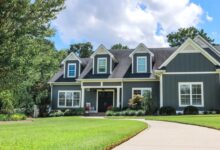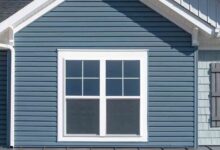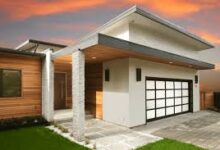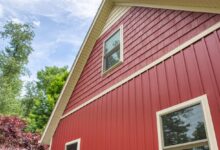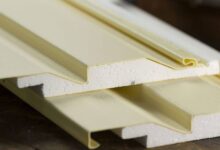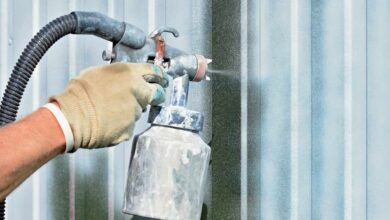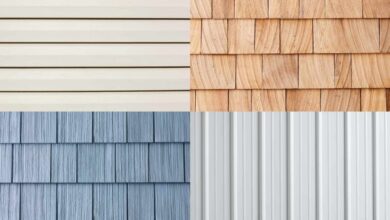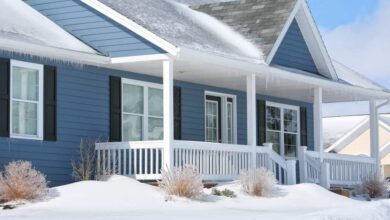Eco-Friendly Siding Choices
As the demand for environmentally friendly construction materials grows, homeowners and builders are turning to eco-friendly siding choices to enhance the sustainability of their homes. Siding not only protects the exterior of a house but also plays a significant role in energy efficiency, aesthetics, and the overall environmental impact. In this article, we will explore the various eco-friendly siding materials available today, their benefits, and some of the best products in the market.
What Is Eco-Friendly Siding?
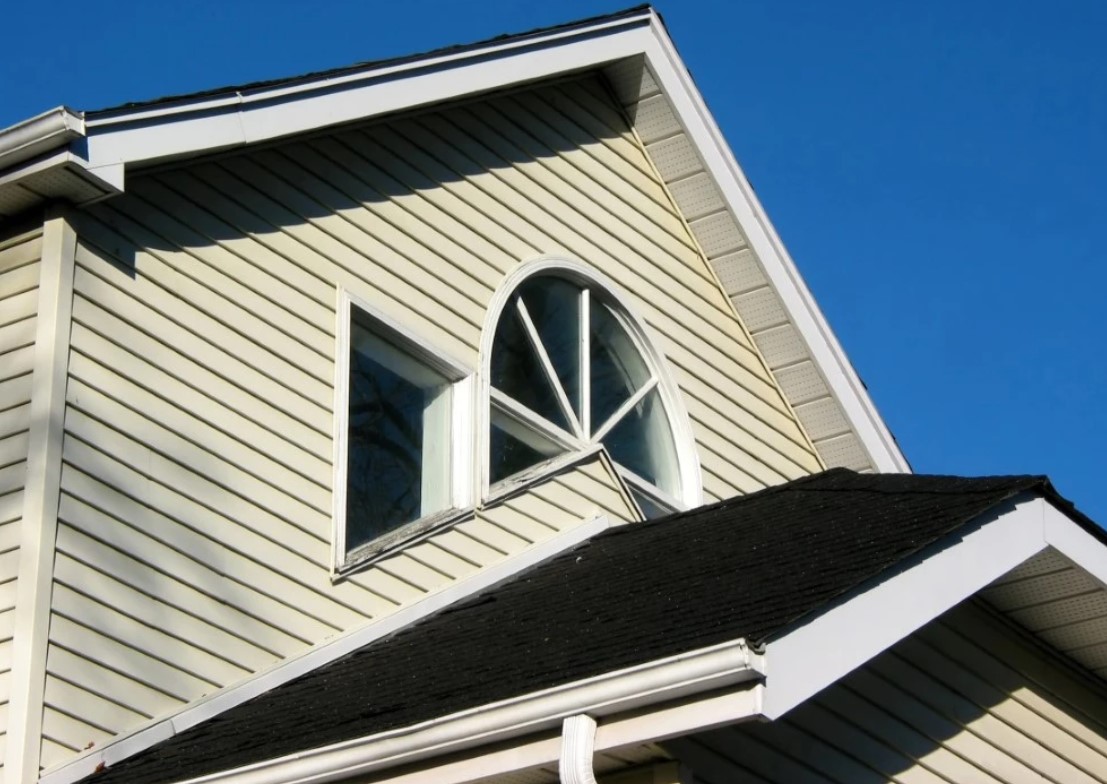
Eco-friendly siding refers to a category of building materials used to cover and protect the exterior of a home or building, designed with a focus on sustainability, energy efficiency, and minimal environmental impact. Unlike traditional siding materials, eco-friendly siding options are crafted with environmentally conscious processes, such as using renewable resources, recycled materials, or low-impact manufacturing methods. These siding options not only contribute to reducing the carbon footprint of the construction process but also support long-term sustainability by offering materials that are durable, energy-efficient, and recyclable.
The need for eco-friendly siding has grown significantly as the construction industry faces increased pressure to minimize its impact on the environment. As homes become more energy-conscious and consumers become more aware of their carbon footprints, eco-friendly options are becoming the go-to choice for homeowners looking to build or renovate with a focus on green practices. These materials are not only designed to perform well over time but also to minimize waste during both production and disposal.
The Importance of Choosing Eco-Friendly Siding
The environmental impact of traditional siding materials, such as vinyl and wood, has been a concern for decades. Traditional vinyl siding, for instance, is made from polyvinyl chloride (PVC), which is a plastic polymer that is derived from petroleum. The production of PVC involves the use of toxic chemicals and emits pollutants into the environment. Additionally, once the siding reaches the end of its life cycle, it often ends up in landfills, where it can take hundreds of years to decompose.
In contrast, eco-friendly siding materials are designed to mitigate these concerns. For example, eco-friendly vinyl siding today often uses recycled PVC, significantly reducing the environmental impact of its production. Materials like fiber cement, engineered wood, and certain types of metal siding are also gaining popularity due to their use of natural resources, recyclability, and low emissions during manufacturing.
Furthermore, eco-friendly siding contributes to the energy efficiency of a home. Many eco-friendly siding options have superior insulating properties, helping to maintain stable indoor temperatures, reduce energy consumption for heating and cooling, and lower utility costs. With an increasing number of homeowners seeking energy-efficient and environmentally responsible solutions, choosing eco-friendly siding is not only a smart choice for the planet but also for the wallet.
Key Characteristics of Eco-Friendly Siding
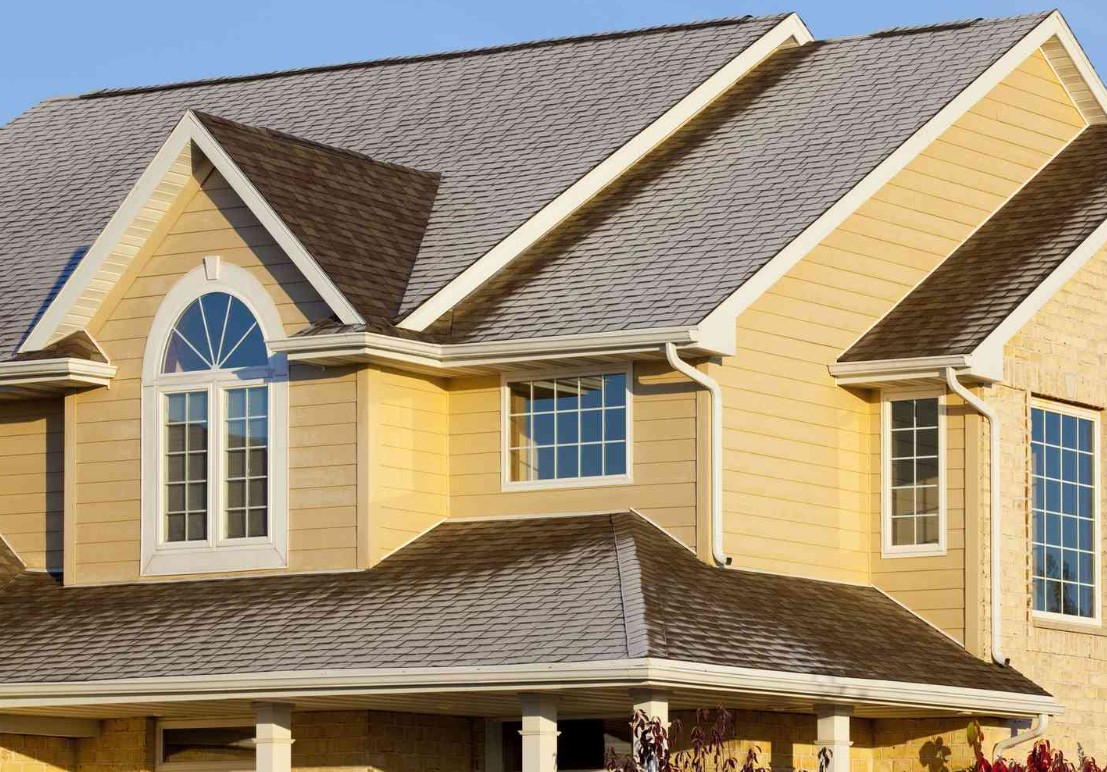
Eco-friendly siding materials generally share a few key characteristics that distinguish them from traditional options. These include:
- Sustainability: Eco-friendly siding is typically sourced from renewable resources or recycled materials. For example, fiber cement siding contains a mixture of sand, cement, and cellulose fibers, which are abundant and renewable. Recycled materials, such as post-consumer waste or scrap from manufacturing processes, are often incorporated into eco-friendly vinyl and metal siding products, reducing the need for new raw materials.
- Energy Efficiency: Many eco-friendly siding products are designed with energy efficiency in mind. Insulated vinyl and fiber cement are two examples of materials that help to maintain a home’s thermal comfort by acting as a barrier against heat loss or gain. This reduces the amount of energy needed to heat or cool a home, leading to reduced greenhouse gas emissions and lower energy costs.
- Durability: Sustainability also means creating products that will last. Eco-friendly siding materials are often more durable than their traditional counterparts, requiring less maintenance and fewer replacements over the years. Fiber cement, for example, is resistant to pests, moisture, and extreme weather conditions, making it a long-lasting option.
- Recyclability: A significant characteristic of eco-friendly siding is that it is designed to be recyclable at the end of its life. For instance, eco-friendly vinyl siding can be reused and repurposed, contributing to a circular economy where materials are constantly reused rather than discarded. Other materials, like fiber cement, have a long lifespan and can be recycled or repurposed when removed or replaced.
- Low Environmental Impact: Eco-friendly siding products are manufactured using processes that minimize harmful emissions and reduce water and energy consumption. For instance, fiber cement siding requires less water and energy to produce than many other traditional materials, making it a better choice for the environmentally conscious consumer.
Common Types of Eco-Friendly Siding
There are several types of eco-friendly siding materials available, each offering unique benefits. The most commonly used eco-friendly siding materials include:
- Eco-Friendly Vinyl Siding: As mentioned, modern eco-friendly vinyl siding is made using recycled materials and is fully recyclable. It is a versatile material available in a variety of colors and styles. The latest advancements in eco-friendly vinyl have made it more energy-efficient and durable, requiring less maintenance and lasting longer than conventional vinyl siding.
- Fiber Cement Siding: Fiber cement is made from a combination of sand, cement, and cellulose fibers, which are sourced from wood pulp. This type of siding is incredibly durable, fire-resistant, and energy-efficient. It is also resistant to pests and weathering, making it a long-lasting and low-maintenance choice.
- Wood Siding: Wood, when sourced from sustainably managed forests, is a renewable and biodegradable material. Many wood siding products are treated to be resistant to weathering, pests, and rot. While it does require more maintenance than other options, wood siding offers natural beauty and an environmentally responsible solution when sourced responsibly.
- Metal Siding: Metal siding, particularly aluminum and steel, can be highly eco-friendly when sourced from recycled metals. Metal siding is durable, fire-resistant, and can be easily recycled at the end of its life cycle. It is also a good choice for homes in areas prone to extreme weather conditions.
- Stone Veneer and Brick Siding: While heavier and more expensive, stone veneer and brick siding offer long-lasting durability and can be sourced sustainably. These materials have excellent thermal mass, helping to regulate indoor temperatures and reduce energy consumption. They also have a low environmental impact, as they can be locally sourced and are highly durable.
In summary, eco-friendly siding represents a significant shift toward more sustainable construction practices. By choosing eco-friendly siding options, homeowners contribute to reducing the environmental impact of their homes while benefiting from enhanced energy efficiency, durability, and reduced maintenance costs. Whether you’re interested in reducing your carbon footprint, saving money on energy bills, or simply making your home more sustainable, eco-friendly siding is a key component of a greener future.
Benefits of Eco-Friendly Siding

Sustainability and Reduced Carbon Footprint
One of the main reasons to choose eco-friendly siding is its positive environmental impact. These materials are made with sustainable resources, which means they help conserve natural habitats and reduce deforestation. Additionally, eco-friendly siding often has a lower carbon footprint during manufacturing, installation, and disposal.
For example, eco-friendly vinyl siding is made from recycled materials and can be recycled again at the end of its life cycle. This closed-loop process minimizes waste and conserves valuable resources. Furthermore, eco-friendly siding materials tend to have superior insulation properties, which helps reduce the overall energy consumption of a home, ultimately decreasing greenhouse gas emissions.
Energy Efficiency
Eco-friendly siding choices contribute to better insulation, which can significantly reduce the energy needed for heating and cooling your home. Some materials, like fiber cement and insulated vinyl, are particularly effective at keeping heat inside during the winter and keeping it out during the summer.
By improving the energy efficiency of your home, eco-friendly siding reduces reliance on heating and cooling systems, leading to lower utility bills and a more comfortable living environment. The insulating properties of these materials also help stabilize indoor temperatures, making homes more energy-efficient year-round.
Top Eco-Friendly Siding Choices
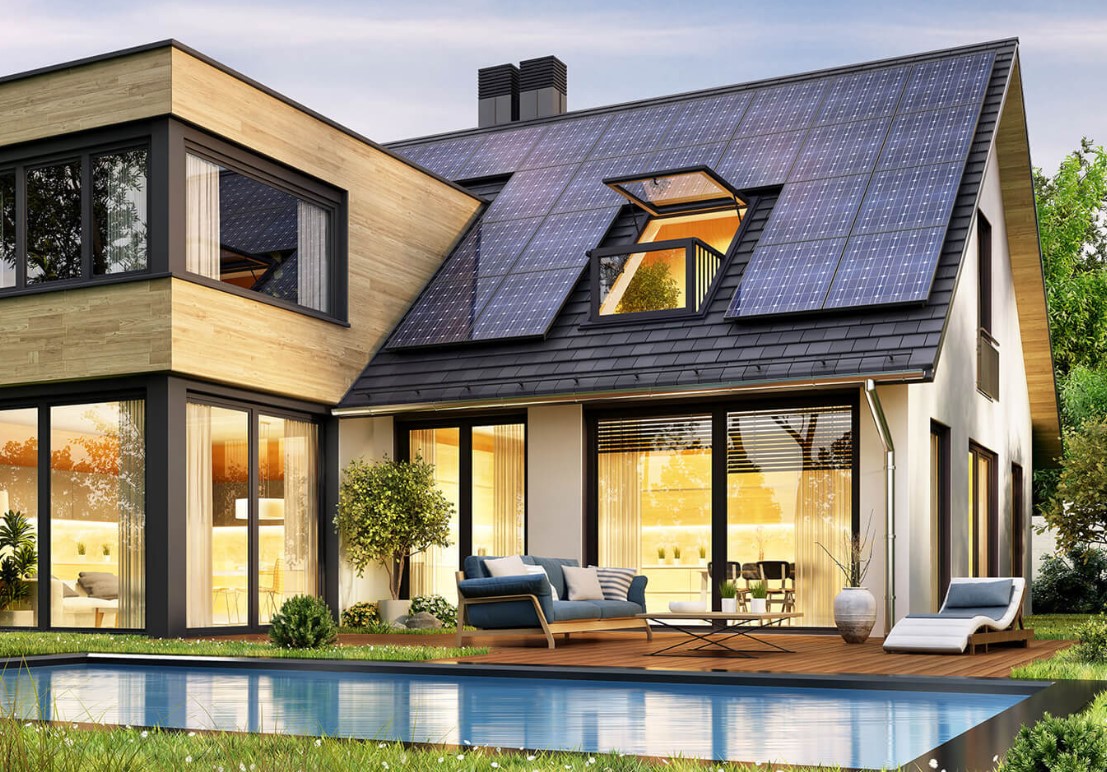
There are several eco-friendly siding options available on the market today. Below, we will discuss three of the most popular choices: eco-friendly vinyl siding, fiber cement siding, and wood siding.
Eco-Friendly Vinyl Siding
Eco-friendly vinyl siding has come a long way in recent years. Traditionally, vinyl siding was not considered an environmentally friendly option due to concerns about its production process and the use of non-renewable resources. However, modern eco-friendly vinyl siding is made with recycled materials and is fully recyclable at the end of its lifespan.
Features of Eco-Friendly Vinyl Siding:
- Durability: Vinyl siding is highly resistant to weathering, fading, and cracking, making it an excellent choice for long-term use.
- Low Maintenance: Unlike wood siding, which requires regular painting and sealing, vinyl siding only needs occasional cleaning.
- Cost-Effective: Vinyl is one of the most affordable siding options, making it a popular choice for homeowners on a budget.
Pros:
- Eco-friendly and made from recycled materials
- Easy to install and maintain
- Available in a variety of colors and styles
Cons:
- Can fade over time, although newer products are designed to resist fading
- Not as natural-looking as wood or fiber cement
Where to Buy:
Eco-friendly vinyl siding can be purchased from major home improvement retailers like Home Depot, Lowe’s, or online stores like BuildDirect.
Fiber Cement Siding
Fiber cement siding is another excellent eco-friendly option. It is made from a mixture of sand, cement, and cellulose fibers, which makes it incredibly durable and fire-resistant. Fiber cement siding has gained popularity due to its aesthetic appeal, which can mimic the look of wood without the environmental drawbacks.
Features of Fiber Cement Siding:
- Durability: Fiber cement is resistant to pests, rot, and extreme weather conditions.
- Fire Resistance: Unlike wood or vinyl, fiber cement does not catch fire easily, making it a safer option.
- Low Maintenance: Fiber cement siding requires less maintenance than wood siding but more than vinyl.
Pros:
- Highly durable and resistant to pests, rot, and fire
- Offers a variety of styles and colors, including options that resemble wood
- Long-lasting and requires minimal upkeep
Cons:
- Higher upfront cost compared to vinyl siding
- Requires professional installation due to its weight
Where to Buy:
Fiber cement siding products can be found at stores such as James Hardie and local building supply stores.
Wood Siding
For homeowners seeking a natural look, wood siding remains a popular choice. While it requires more maintenance than other eco-friendly siding options, sustainable wood siding made from responsibly sourced timber offers many environmental benefits.
Features of Wood Siding:
- Aesthetic Appeal: Wood siding adds a natural, rustic look to any home and can be stained or painted in various colors.
- Sustainability: When sourced from sustainable forests, wood siding can be a renewable resource.
- Insulation: Wood provides good insulation, helping to maintain energy efficiency.
Pros:
- Offers a natural, timeless look
- Can be recycled or repurposed
- Often made from sustainably harvested wood
Cons:
- Requires regular maintenance, such as staining and sealing, to protect it from the elements
- Prone to pests and rot without proper care
Where to Buy:
Sustainable wood siding options can be found at specialty stores like Green Building Supply or local lumberyards.
How to Choose the Best Eco-Friendly Siding for Your Home
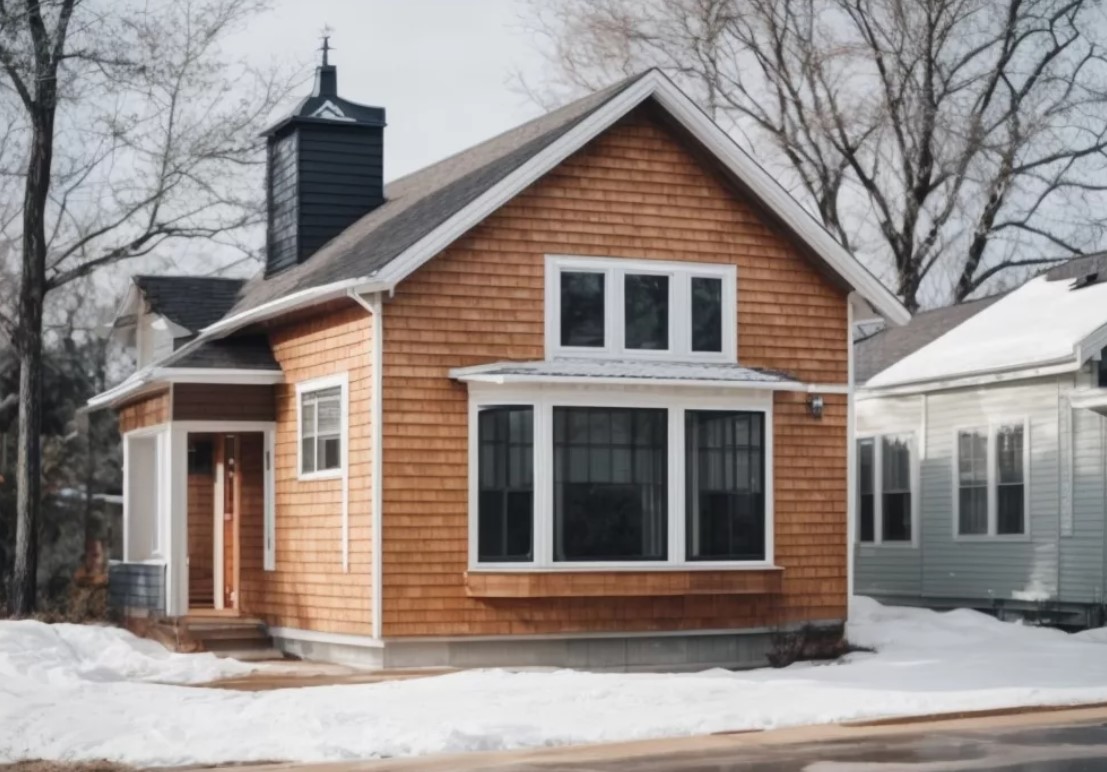
When selecting the right eco-friendly siding for your home, consider factors such as your climate, budget, and aesthetic preferences. Each type of siding offers different benefits, so it’s important to choose the one that best aligns with your goals.
- Climate Considerations: If you live in an area prone to extreme weather, fiber cement siding might be the best choice for its durability. However, if you live in a milder climate, eco-friendly vinyl or wood siding could be suitable options.
- Budget: While eco-friendly vinyl siding tends to be the most affordable, fiber cement and wood may require a higher initial investment. However, both offer long-term durability, which could save you money in the future.
- Aesthetic Preferences: Consider the overall look you want for your home. Wood siding offers a natural and rustic appearance, while fiber cement can mimic the look of wood, and vinyl siding provides a sleek, modern look.
FAQs About Eco-Friendly Siding
1. What is the most eco-friendly house siding material?
The most eco-friendly house siding depends on the specific needs and preferences of the homeowner. Eco-friendly vinyl siding made from recycled materials is a popular option, as is fiber cement siding, which is durable and energy-efficient. Wood siding, when sourced sustainably, is another environmentally friendly choice.
2. Can eco-friendly siding save me money?
Yes, eco-friendly siding materials, especially those with excellent insulation properties, can help reduce energy costs by improving your home’s energy efficiency. Vinyl siding is also cost-effective due to its low maintenance needs.
3. How long does eco-friendly siding last?
Eco-friendly siding materials are designed for long-lasting durability. Vinyl siding can last up to 50 years, fiber cement can last 30-50 years, and wood siding can last around 20-30 years if properly maintained.
